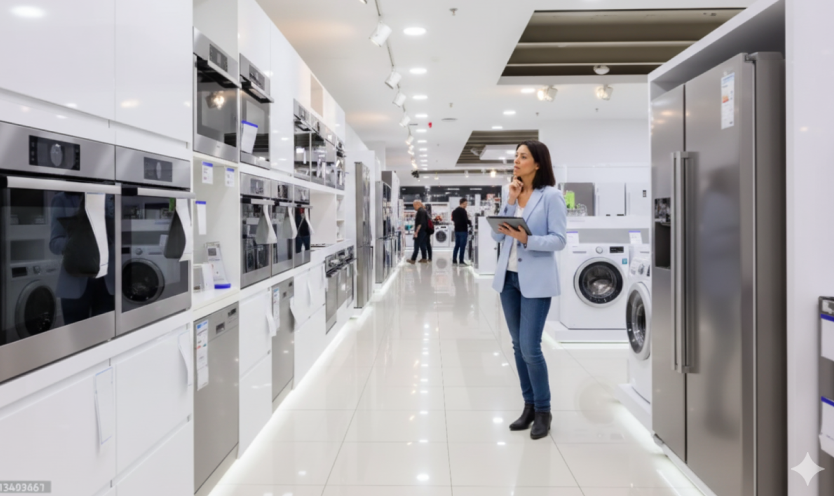Healthy Margins: How Pharmacies Use AI to Balance Regulation, Competition, and Profitability
Healthy Margins: How Pharmacies Use AI to Balance Regulation, Competition, and Profitability
Pharmacy retail operates at the intersection of health, regulation, and commerce. Prices are not just numbers on a shelf; they carry implications for accessibility, compliance, and patient trust. At the same time, pharmacies are also retailers competing with grocery stores, mass merchants, and eCommerce platforms on a wide range of over-the-counter products, supplements, and wellness categories.
Balancing these competing priorities is no simple task. Prescription medicines often fall under strict regulations that limit pricing flexibility, while front-of-store categories like vitamins, personal care, and medical devices are exposed to intense price competition. Add in the growing presence of online players and the challenge of balancing regulatory compliance with profitable retail strategy becomes clear. This is where AI can play a decisive role.
To understand how AI makes a difference, it is important to first examine the unique pricing pressures that pharmacies face.

The Unique Pricing Challenges of Pharmacy Retail
Pharmacies operate under constraints that few other retailers face. Prescription drug pricing is heavily regulated, often leaving little room for adjustment. Margins on these products are slim, and reimbursement rates add further complexity.
Meanwhile, over-the-counter categories tell a different story. Vitamins, wellness products, beauty care, and even household items compete directly with grocery chains and online marketplaces. Here, competition moves quickly, and customers are highly price sensitive. Pharmacies must juggle both extremes: highly regulated items on one hand, and intensely competitive categories on the other.
This dual reality creates constant pressure. A pharmacy cannot afford to misstep on compliance, yet it also cannot afford to ignore competitors who may undercut prices on popular non-prescription items.
These complexities explain why traditional methods of tracking competitors and setting prices often fall short.
Why Traditional Pricing Approaches Fall Short
Many pharmacies rely on periodic price audits or syndicated data feeds to track competitors. While useful, these methods lag behind the pace of modern competition. By the time a pharmacy adjusts pricing based on outdated insights, competitors may have already gained an advantage.
This creates two risks. Pharmacies may underprice everyday items like pain relievers or supplements, leaving profit on the table. Or they may over-discount in response to perceived competitive threats, cutting margins unnecessarily. In both cases, the lack of timely and precise intelligence erodes profitability without delivering customer value.
What pharmacies need is a smarter approach, one that recognizes regulatory limits while sharpening competitiveness in categories where pricing flexibility does exist.
This is where AI changes the game, providing tools that not only track the market but translate insights into profitability.
How AI Powers Smarter Pharmacy Pricing
Hypersonix enables pharmacies to move beyond static, reactive strategies by using AI to bring clarity to complex pricing decisions. Product matching is one of the most powerful capabilities. Customers do not just compare identical SKUs. They weigh branded vitamins against private-label equivalents or look at substitutes for wellness products. Hypersonix uses computer vision, large language models, and attribute analysis to accurately identify equivalents, ensuring pharmacies always understand the true competitive set.
Daily competitive tracking then ensures that pricing decisions are based on the freshest data, not outdated reports. Pharmacies can see how local rivals, grocery chains, and online marketplaces are adjusting prices every day, allowing them to align decisions with real market dynamics.

Elasticity modeling adds another layer of intelligence. While prescription drugs may not allow much flexibility, other categories do. By understanding which items are highly price sensitive and which are not, pharmacies can avoid blanket discounting and instead focus promotions and adjustments where they matter most.
Promo AI complements this by helping pharmacies evaluate the effectiveness of campaigns. For example, a promotion on seasonal allergy products might drive significant incremental lift, while a discount on everyday multivitamins may only cannibalize existing sales. AI makes it possible to separate the campaigns that build profitability from those that drain it.
Finally, price execution monitoring ensures that strategies are consistently applied across channels, in-store, online, and in pharmacy management systems. This consistency is essential for maintaining both customer trust and compliance with regulatory standards.
All of this leads to a central insight: profitability in pharmacy is no longer about choosing between compliance and competition, but about achieving both with intelligence.
From Compliance Pressure to Competitive Advantage
The biggest lesson is that regulatory limits do not have to be barriers. Instead, they can serve as guardrails within which smart competitive strategies operate. By pairing compliance discipline with AI-driven intelligence, pharmacies can move away from defensive pricing and toward strategies that create both resilience and growth.
Conclusion
Pharmacy retail is one of the most challenging environments for pricing. The need to balance strict regulations, aggressive competition, and profitability creates constant tension. But with AI, pharmacies no longer have to choose between compliance and competitiveness.
Hypersonix equips them to monitor markets daily, model elasticity where flexibility exists, optimize promotions for profitability, and ensure consistent execution across all channels. The result is not only healthier margins but also stronger trust and long-term resilience.






